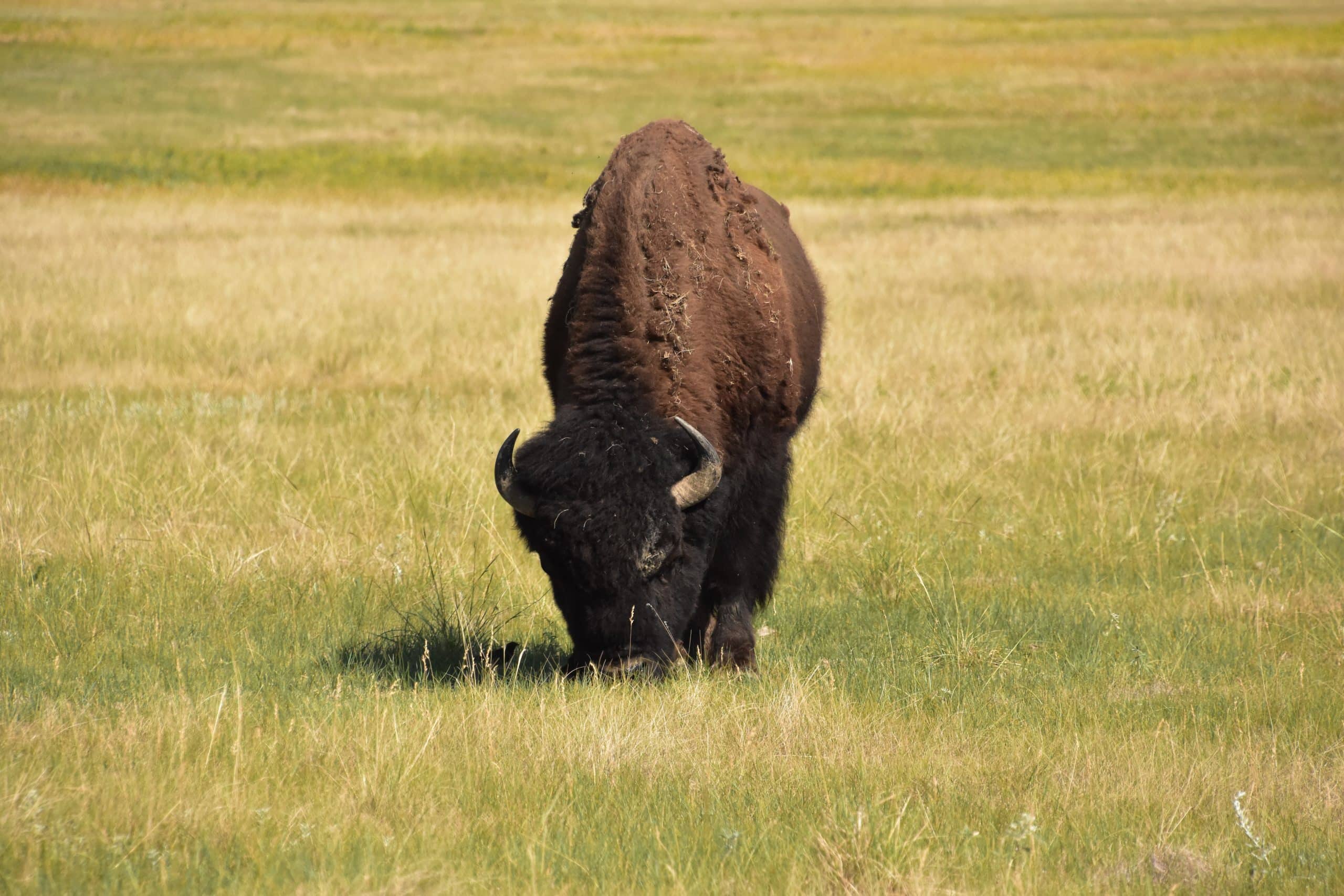One of the most unique attractions in southwest Kansas is the Sandsage Bison Range, located just south of Garden City on Business US 83. This 3670-acre nature preserve is home to more than 100 American Bison that roam the open plains just as they have for thousands of years. The preserve offers tours for interested visitors who wish to get a closer look at these fascinating animals.
If you plan on heading over to the Sandsage Bison Range, it helps to have some idea of what these creatures are all about. This three-part blog series will help get you up to speed about American Bison, so you can get the most out of your experience at the range.
Bison Behavior
In part one of this series, we covered some basic knowledge about the American Bison. If you haven’t read it, check it out here. In part two, we’ll look at some of the details of bison behavior so you can better understand and interpret what you might see these animals doing.
Daily Life
Like most nomadic herd animals, the life of a bison revolves almost entirely around walking and eating. Sure they will occasionally fight or mate or run from predators, but the vast majority of their time is spent eating and walking and eating and walking…
On a daily basis, bison usually spend about two hours grazing, resting, and chewing cud, then they move on to a new spot to repeat the cycle. If you spot a bison in captivity or in the wild, they’ll most likely be doing one of these three things.
Wallowing
Another bison behavior you might notice is wallowing. Basically, wallowing is a process where bison roll around in shallow pits to cover themselves in dirt or mud. The exact purpose of this behavior is still not completely understood by experts.
The purpose of wallowing might be to remove ticks and lice, to relieve skin irritation, to regulate body temperature, to groom, or even just to play. In any case, it seems to be something they love to do when they aren’t eating or sleeping.
Wallowing has interesting effects on the environment as hundreds of wallowing holes can be formed by a single herd, which results in greater plant and animal diversity in bison grazing areas.
Horning
Bison will sometimes rub their horns on trees in a process called “horning.” Bison will typically choose more aromatic trees to “horn,” such as cedar or pine. While this behavior is not perfectly understood either, theories suggest it may be an attempt to ward off insects by releasing specific aromas from these trees.
Reproduction
Bison society is organized around the herd, which is typically divided into male and female herds for most of the year. During the summer mating season, the herds mix so the bulls can seek out females for mating and fight other males for status and superiority. Baby bulls remain with the female herd until they are old enough to leave and join the males.
Generally, female Bison can reproduce between the ages of three and nineteen, usually giving birth to one calf per year. However, if a female Bison’s weight is too low or she is generally malnourished, she will not give birth. This helps protect the herd in lean times when food is scarce. Once her weight rises, she’s able to reproduce again.
Defense
As 12-foot long animals weighing 3000 pounds, Bison have very few natural predators. However, a few can threaten the animal including wolves, coyotes, and bears.
Typically, wolves and coyotes attack in packs. With enough persistence, they can successfully take down weaker and slower members of the herd.
Bears rarely attack bison directly, instead preferring to find a wolf or coyote kill, drive off these canines, and steal the kill for itself.
Cougars are usually not big enough to attack an adult Bison, but a committed cougar might be strong enough to take down a young or weak member of the herd.
Stay Cautious
If you take away one thing from this article, remember that bison are wild animals that can be potentially fatal to humans – even unintentionally. Sure, Bison like to spend most of their time calmly and peacefully foraging for food, but the situation can change suddenly and unpredictably.
Despite fears about bears, wolves, and snakes, bison are the most dangerous animals humans encounter in national parks. The reason for this danger is that bison appear to be docile and friendly, which gives onlookers a false sense of security. Nobody is foolish enough to go up and pet a wild bear, but they will be happy to run over to a grazing bison for a selfie. Don’t do it!
We’re not trying to demonize this majestic beast, it’s just important to realize that these are horned, wild animals that are as heavy and as fast as a car, which is inherently dangerous. The danger increases If you are near a male herd during mating season, or if you are between a mother and her calf.
If you ever plan to be near a bison, be sure you are accompanied by a qualified professional who can interpret the mood and intent of the animal. Even with experts present, always be sure to maintain at least a 250-foot distance between you and a bison.
Conclusion
Now, we hope you have a better understanding of bison behavior, and you should be able to recognize and interpret some of the activities you might witness out at Sandsage Bison Range.
If you’re planning a trip to Garden City, feel free to check out the rest of our site for other great attractions and accommodation available in our city.


